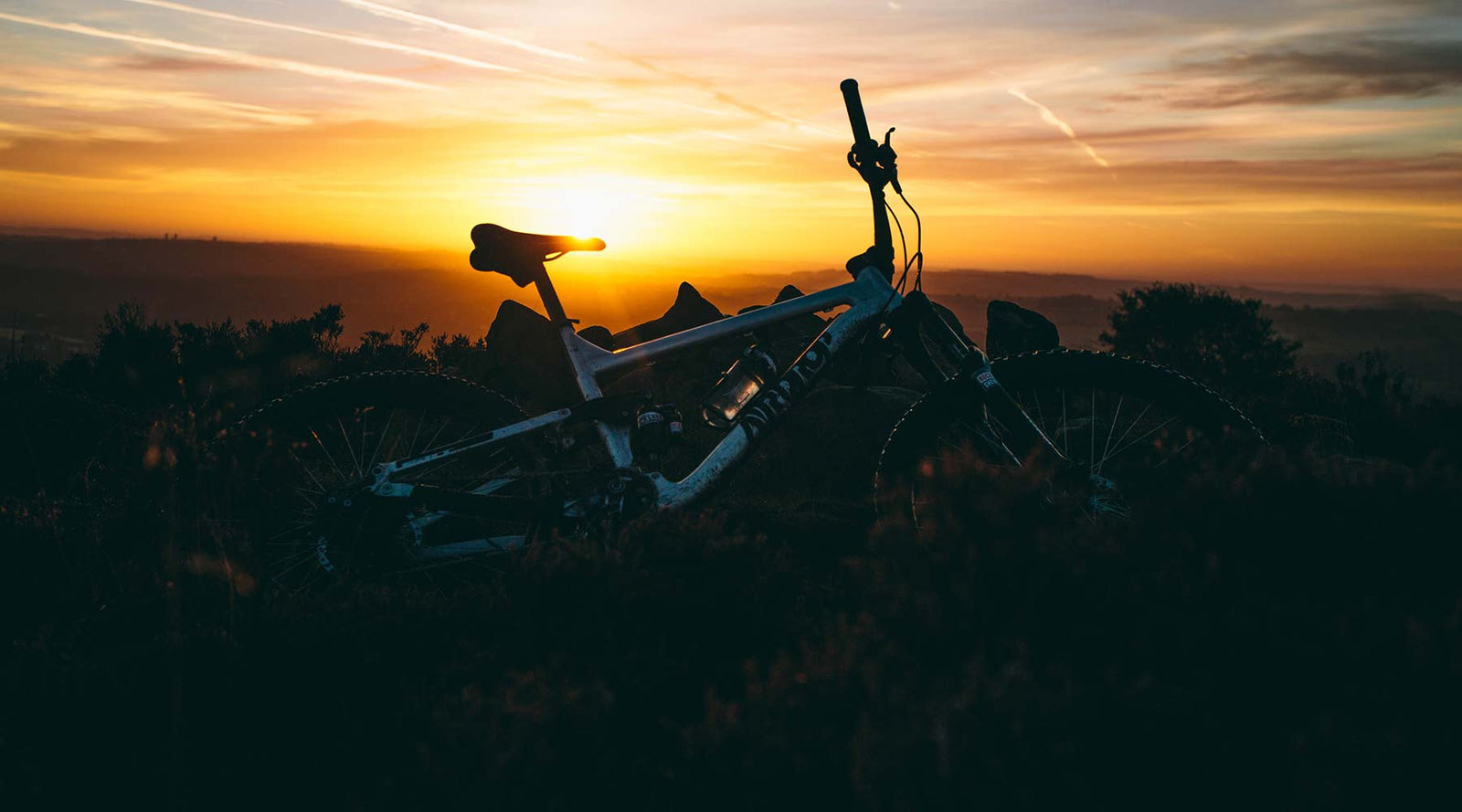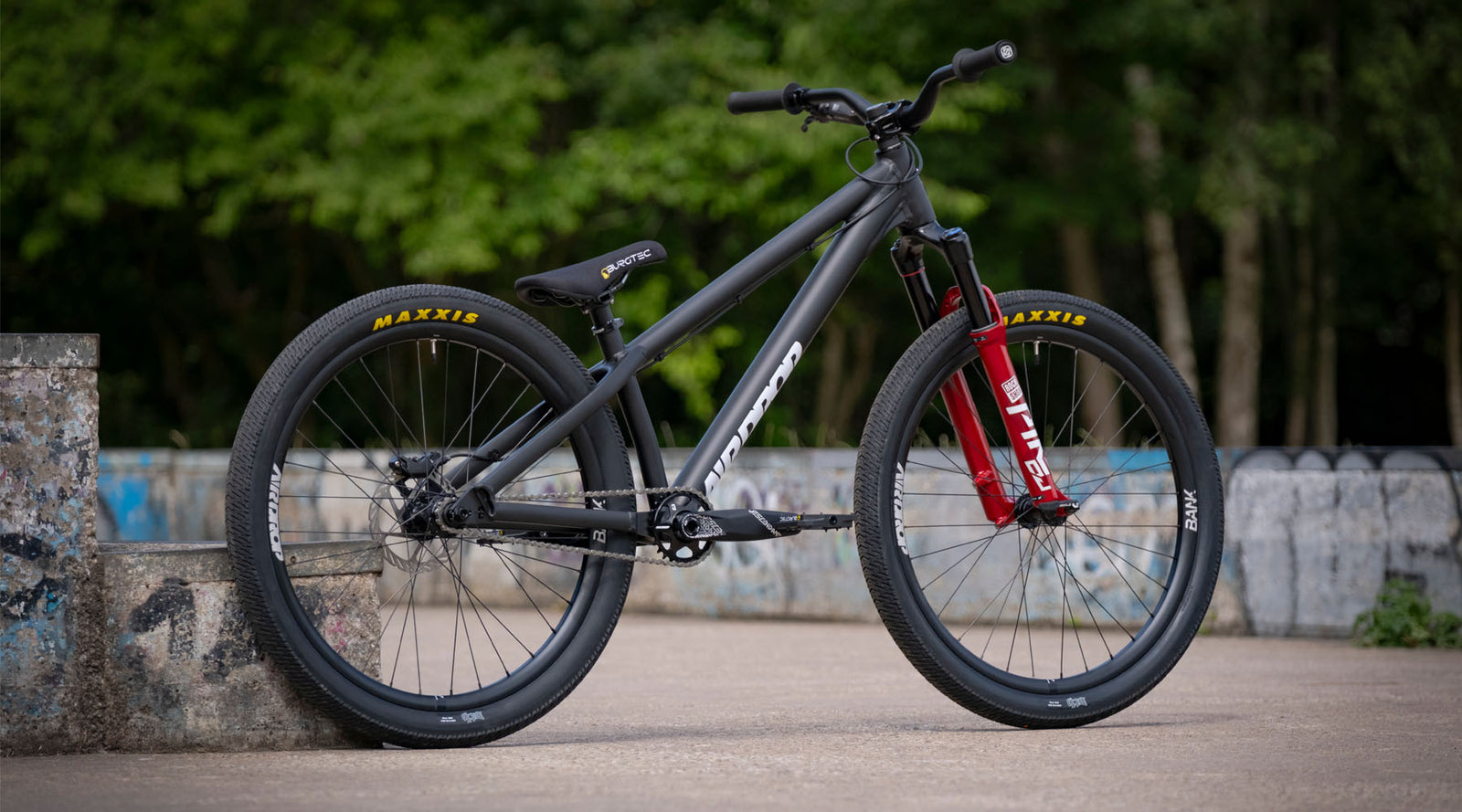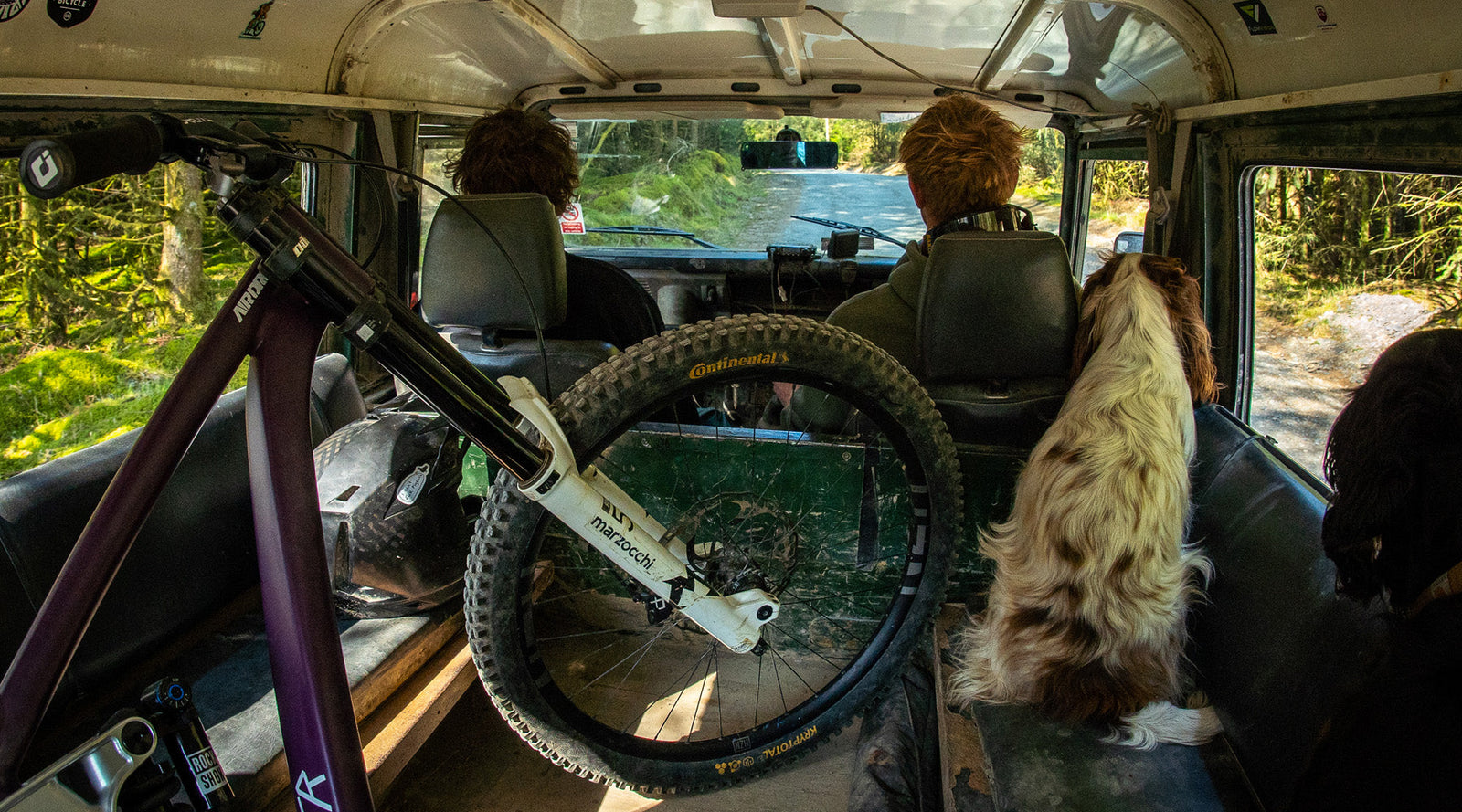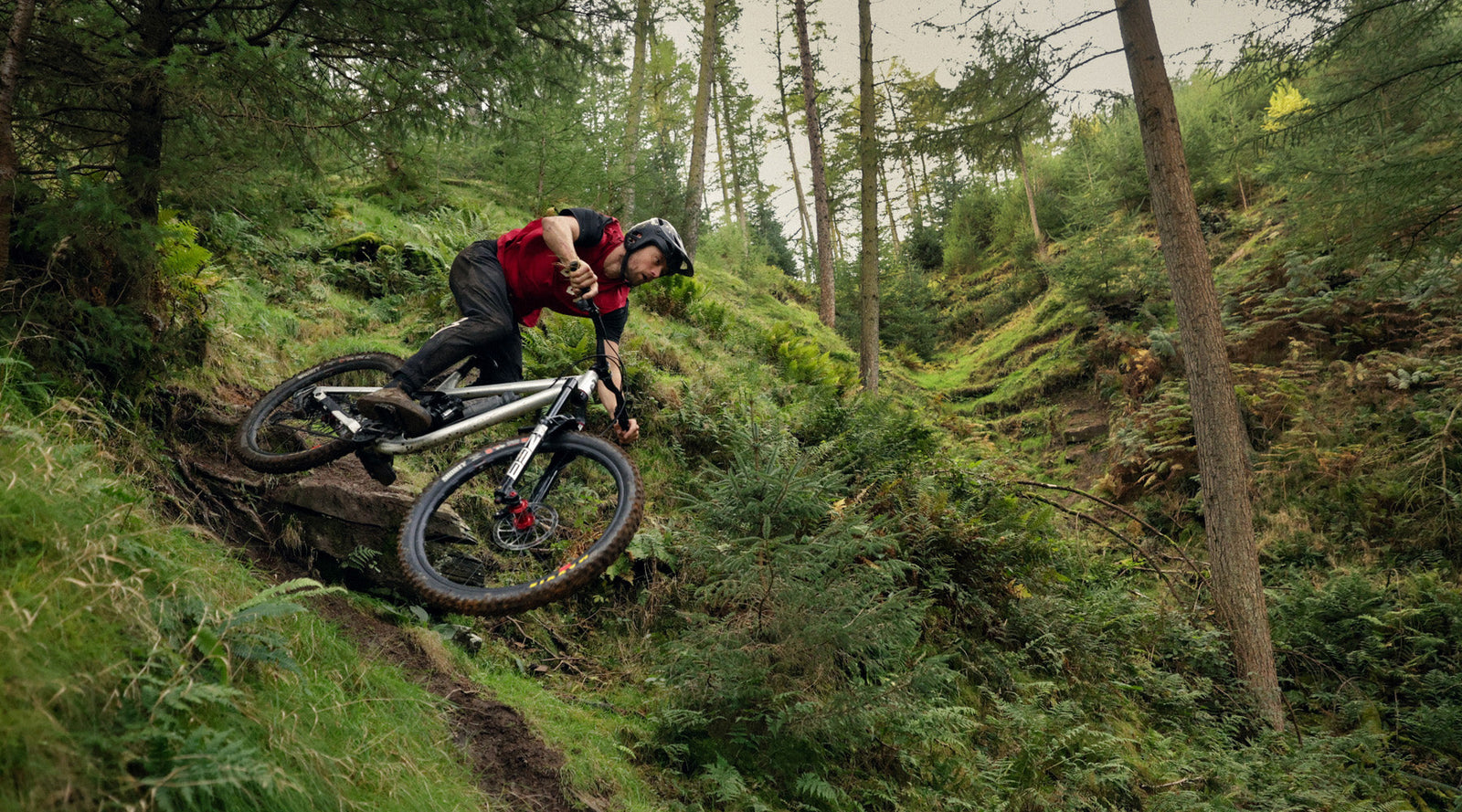
Independence Day
January 30, 2018
Every day is Independence Day at Airdrop Bikes. OK, so we’re not out on the lawn at the crack of dawn raising the flag, but it is important, and here’s why.
Airdrop is a genuinely independent, rider owned bike brand. I’ve said that a lot in interviews and in blogs I’ve written before. I almost avoided using the phrase “Rider Owned” because it’s so much of a cliche these days. It’s just another one of those over-used industry terms that we’ve all become so tired of. After years of full-gas marketing from an increasingly commercial bike industry, we all have a kind of malaise at the usual BS that gets trotted out by copy-writers. You know what I’m talking about - every time i hear the word ‘optimised’ (or the Californian variant ahptimized) I shudder, not to mention the massive overuse of superlatives. Sometimes it seems like anything ending in -er will sell a few bikes.
The problem for me is that although I might be writing marketing copy right now, I’m so far removed from that marketing-agency intern that usually taps out this crap that I have a bit of a problem. A couple of years ago I was the customer, now I’m the company owner, but also the dude that answers the phone, makes the tea, designs the bikes and builds them too. I’m totally invested in Airdrop Bikes; in a way it’s my life’s work. I’m passionate about it, I believe in what I’m doing and I work bloody hard at it. So I need to find words to describe it that are not the same old BS.
Which is why the genuinely independent bit is important. Not just independent, you understand, but genuinely independent. That distinction counts for a lot. Not least because it’s quite a rare thing these days, although that might not be immediately obvious. Most of the brands that we know and love have complex and often obscure ownership structures, and that can have a profound effect on their values and ethics, their customer service and even the bikes that they sell. Before we get too far into what Airdrop is, let’s have a look at what it most definitely isn’t…
The Megabrand
We all know who these guys are. The biggest brands in the industry, turning over hundreds of millions of dollars. In a way you could say that they’re independent purely through financial might, but that’s not entirely true. In reality they’re owned by shareholders or worse, a parent company: The Globex Corporation. That means whatever the mission statement on the website may say, the purpose, the very reason for the existence of that company is to generate shareholder value. They’re in business to make money, as much and as quickly as possible. Their list of priorities doesn’t have quality, service, values, environment, fun or staff wellbeing anywhere near the top.
The VC Backed Brand
They’re going places, fast. They’re young, up and coming and they’re backed by venture capitalists with deep pockets and an appetite for big returns. They’ve come out of nowhere and taken the industry by storm. And in a lot of cases, they’ve done some pretty cool stuff too. But there is a catch: those VCs want their money back and more; the owners are swimming with sharks. With VC backing, your priority is growth: you’ve gotta keep growing to feed the beast. The game is to sell more and more all the time.
The Own-Brand
I used to work for a big retailer and part of my job was to cook up their in-house brands. There were plenty of proper brands that we could have sourced no problem, so why bother? Simple: setting up your own brand means you can control your own supply chain and make a vertical margin. If you do it right, you can make double the profit. The real trick is to make sure your customers don’t know it’s an own-brand, in case they assume it's cheap and nasty. Is there any truth to that? Sometimes. If they’re lucky, the retailer has got someone heading up that brand who is genuinely passionate about it and determined to make some good stuff. But ultimately it exists for purely commercial reasons. There’s no back-story. There are no values driving it; there’s no mission. No-one really believes in it. And a lot of the time, you can find the very same product in the next shop with a different badge.
The Distributor Brand
Some of the biggest players in our industry are distributors. To a lot of customers they’re almost invisible, but the big distributors grew in a time when there were only independent bike shops; no multiple chains, and no e-commerce businesses. At some point they realised that they didn’t need to buy in bikes from an independent brand when they could make up their own. You might be surprised how many bike brands are actually just run out of an office in a big distributor’s HQ and for them, it’s a box-shifting game.
Airdrop is owned entirely by myself. If you’re familiar with the backstory, you’ll know that I saved up a little every month for 12 years to fund it. No shareholders, no parent company, no VC backers. Nobody to tell me what to do and nobody to pay back. The only people I’m answerable to is my customers, and that’s how I think it should be.
Does any of this matter? Not necessarily. Some people just want a nice bike and there’s plenty of choice out there. I’m not claiming any kind of moral superiority for Airdrop. In my opinion it’s not essential to sell your soul to build a strong business, and although I may be wrong about that, Airdrop is my attempt to prove it. Having worked for some ruthlessly commercial businesses in the past I learned some hard lessons, so independence is one of the main reasons why I set up in the first place. Airdrop definitely isn’t in business primarily to make money; quality of product, service and experience is more important and if I get that right, the rest will flow naturally. I just want people to understand that being properly independent is both a blessing and a curse, and that’s particularly relevant right now…
Airdrop is starting to feel established and though small, it’s past the initial “is this even going to work?” phase. It’s grown a bit, taken on staff and premises, and moved out of the garage. There’s a new bike coming out very soon, and all of that has been paid for through sales of the Edit. So far so good, but I’ve got a couple more bikes ready to put into production, a tonne of ideas, and cash is what’s holding things up. Airdrop customers are hungry for more. I’ve been told several times recently to sell equity in the business to generate some cash. Wherever you go for advice, this is what you’re told. It seems like the fast-results culture is so ubiquitous now, even financial institutions don’t seem to understand the importance of growing slowly and staying small. When did ‘growing quickly’ become the only measure of success? And when did selling your soul to some rampant capitalist become the only way to get there?
Maybe I’m old fashioned, but if I want a thing, I have to earn it. I’m very fortunate to have my own bike company. I know that and I appreciate it every day. I have the freedom to do whatever I want with it, as long as I live within my means. Airdrop’s independence is something I’m very proud of - no shortcuts have been taken to get to this point - and it’ll stand the company in good stead for the future. As long as Airdrop stays independent I can steer clear of the more cynical stuff that other brands might (have to) get up to. It just means I have to go a bit slower, and you might have to forgive me if I don’t rush out that 29er downhill bike just yet. But it also means when I do launch a new bike, you can be sure Airdrop has earned it and put everything into doing it properly.
Ed Brazier
Ed is the owner of Airdrop Bikes. A former web and graphic designer, he sacked off his job one day and decided to start up a bike brand.
2 Responses
Kevin Hughes
February 01, 2018
The way things should be. Hats off to you. My mate has one and I’ll be buying one next time I renew.
Leave a comment
Comments will be approved before showing up.
Also in Airdrop Bikes Blog

Fade Core Refresh
July 09, 2025
Rockshox recently released the Pike DJ to the new Electric Red colour. We like to make sure that we keep our bikes up to date, so we took the opportunity to give the Fade Core a bit of a refresh.

Into The Woods We Go
June 26, 2025
We took a trip down to Dyfi to catch up with Alf and get him on his new Slacker, then do a bit of digging & riding. Watch the video... Into The Woods We Go.
Read More

True North Demo Day
June 06, 2025
We've partnered up with True North Cycle Hub to give you the chance to demo an Edit MX in Wharncliffe Woods on Saturday 14th June, 2025.
Email Newsletter
Our monthly email newsletter gets you access to all the good stuff before everyone else.

Jamie Curnock
February 13, 2018
Hi Ed,
Sweet back story mate and just confirms some things I’ve always felt about the bike industry.
I’ve had a ‘thing’ for Airdrop bikes for ages, namely the Edit. But waited for the Edit V2.
I’ve always built my bikes up from various boxes of bits cause I like really getting to know it all piece together intimately but really love it when caning it off the side of some trail up here in Scotland or down in the Lakes or Brecons.
Only one thing I’m holding back on. Boost rear end. Loads of reasons but mostly cause it makes fit a strong(et) rear wheel. Is this happening and if so what kind of timescale?
Next build in order of preference is: Airdrop Edit, Transition Patrol or Identiti Mettle.
Overall Airdrop is what I want to build up. In orange paint job, no-fuss simple big ass black decals. It’ll look f***ing mint!
I’m just holding on thinking you’ll run a boost rear end. Or am I being a muppet and you’re never going down that track….Probsbly a muppet anyway but good to know if this is in the pipeline..
Currently looking at building up a nice HT but want to hang on to see where you’re going with Airdrop (Edit V3?) next..
Look forward to hearing back,
Jamie.